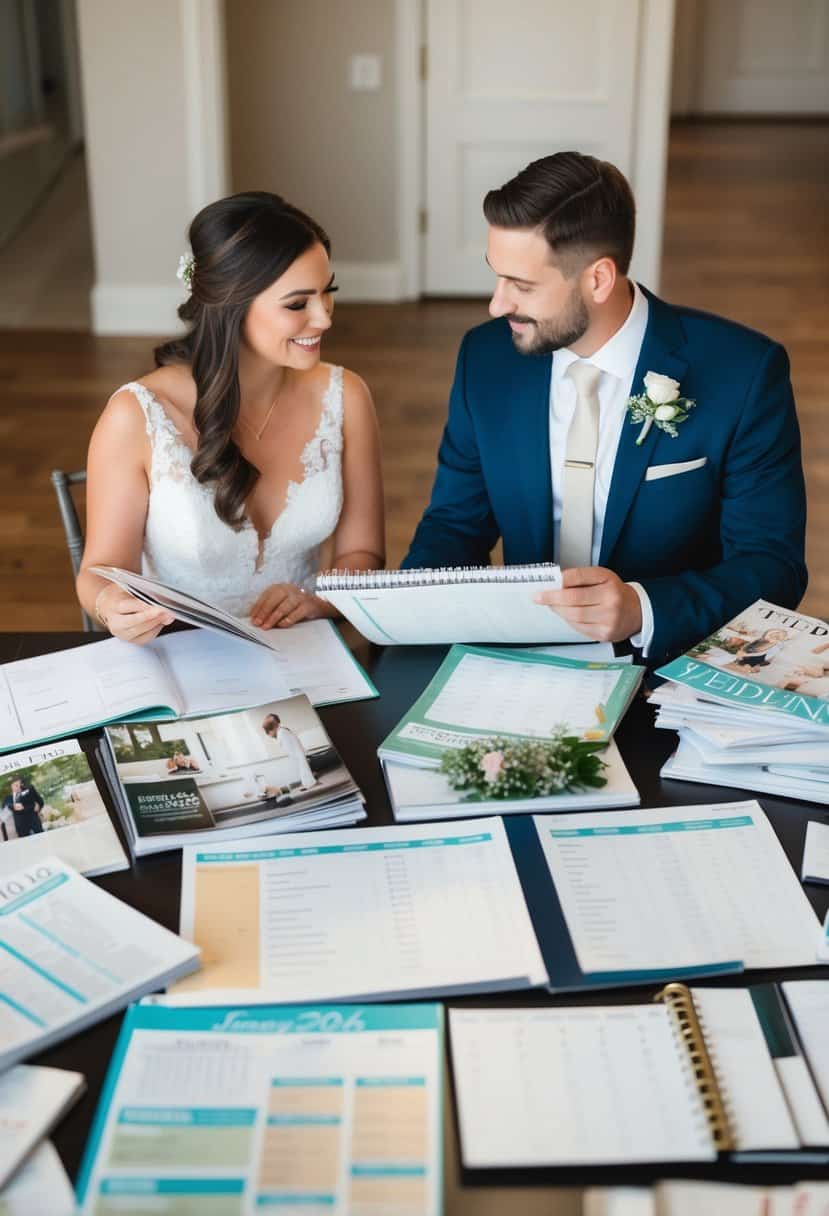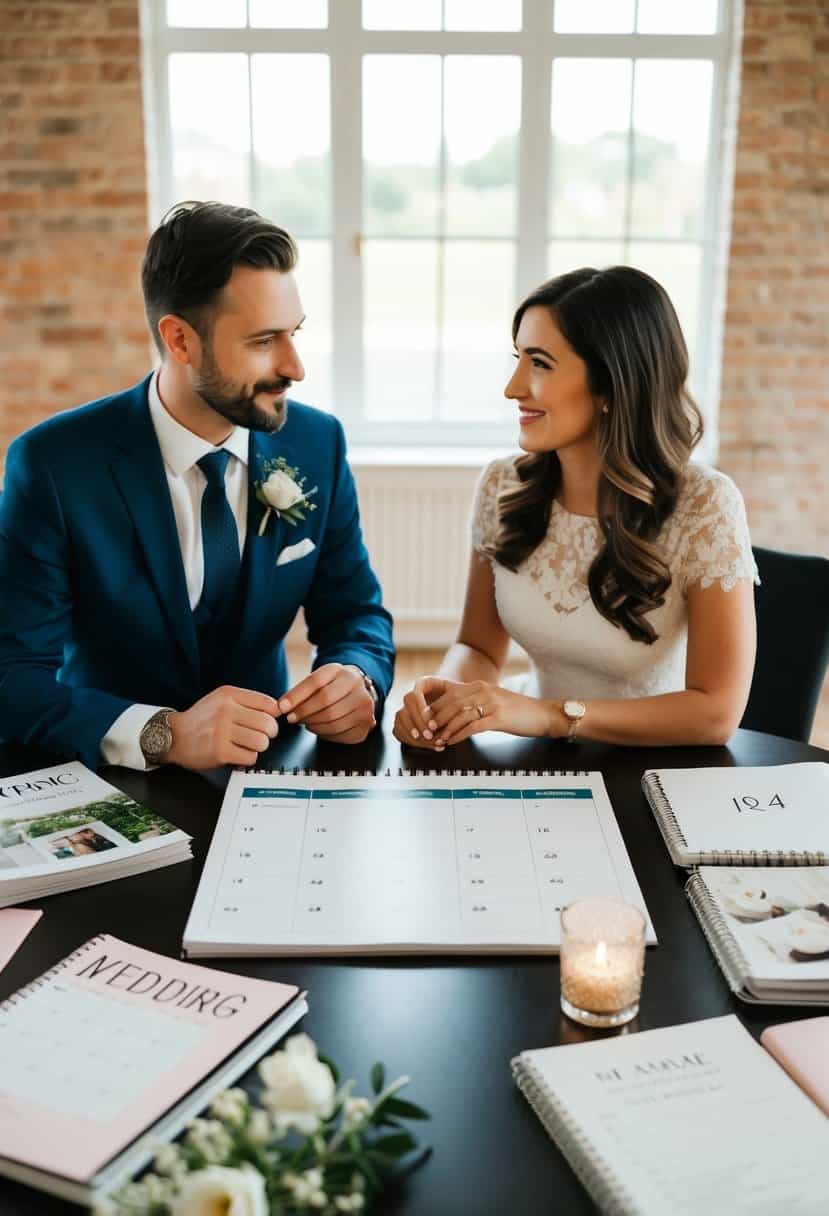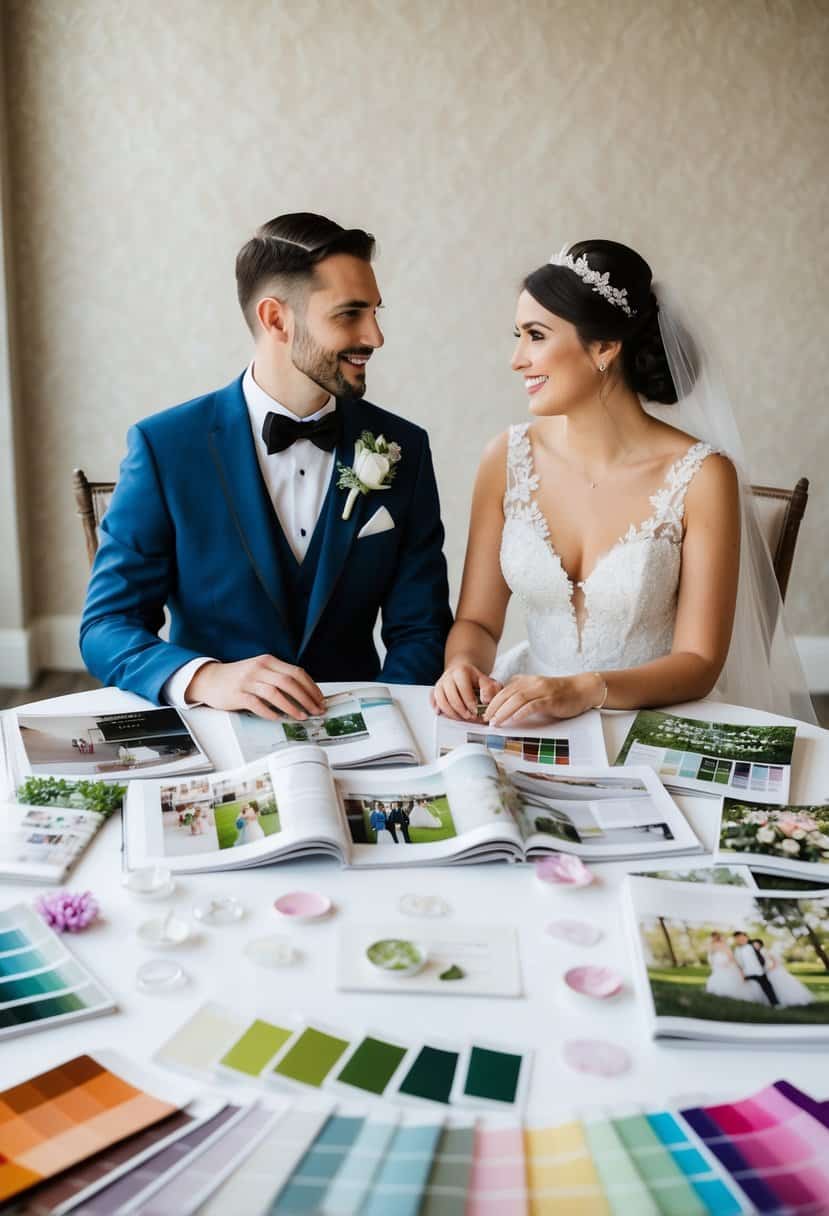Is 6 Months Too Soon to Plan a Wedding? Tips for a Smooth Celebration
Planning a wedding can feel like a whirlwind, especially if you’re aiming to tie the knot in just six months. You might wonder if this timeline is realistic or if you’re setting yourself up for stress. The truth is, you can plan a wonderful wedding in six months, though it might take some careful planning and decision-making.

The key is to focus on what truly matters to you both as a couple. Deciding on your must-haves early on and sticking to a clear schedule is crucial. Picking out a venue right away can set everything into motion and help shape the rest of your plans.
For instance, once you book your venue, you can choose a date and start working on other details like decorations and guest lists.
You’ll need to manage your time wisely and communicate often with your partner, family, and vendors. With the right mindset and good planning tools, you can pull off a charming wedding day without the extra-long wait. Dive in with confidence, knowing that many couples have chosen this path and celebrated beautifully.
Setting Your Wedding Date and Venue

When planning a wedding in 6 months, two critical steps are setting the wedding date and booking your venue. These tasks lay the foundation for your entire timeline and are among the first decisions you need to make.
Choosing the Perfect Date
Choosing a wedding date is exciting but requires some thought. Think about the season you love. Do you picture a spring wedding with blooming flowers, or maybe a cozy winter event? If you have a favorite holiday or special anniversary, those could make your date memorable.
Consider the availability of your closest family and friends. You don’t want your best friend to have a prior commitment. Sending out save the dates early can help guests plan ahead, especially for those needing to travel.
Check local events that might overlap with your day, causing issues with availability or increased prices. This ensures your dream date is also hassle-free.
Finding and Booking Your Dream Venue
Finding the right wedding venue is just as important as picking the date. Think about what type of setting speaks to you. It might be a farmhouse, a grand ballroom, or a beachside escape.
Once you know your style, research venues in that category. Many places will offer virtual tours, which can save you time.
Availability is key when you’re planning a wedding in a tight timeframe. Contact venues as soon as possible to find available dates.
When booking, ask about package deals, catering options, or vendor restrictions. This way, you can have a clearer idea of your budget and any additional planning you might need to do. Make sure to reserve your spot early to secure your preferred setting.
The Six-Month Wedding Planning Checklist

Planning a wedding in six months is possible with the right timeline and organization. Here’s a guide to manage your time effectively and ensure a successful celebration.
Starting Your Wedding Planning
First things first, set a budget. Knowing how much you can spend will guide all your decisions. Discuss it with anyone contributing to your wedding costs.
Once you have a budget, you can decide on your guest list. This will help you choose a venue that fits your needs.
The venue is key. Once booked, you can set the date for your wedding. Booking early ensures you get your preferred location and date. Popular venues fill up fast, even months in advance.
Consider hiring a wedding planner if your budget allows. A planner can help you stay organized and reduce stress. If you prefer to plan yourself, download a detailed wedding planning checklist to stay on track.
Wedding Planning Milestones
Once the date and venue are set, move on to other important tasks. Start by researching and booking key vendors like caterers, photographers, and florists as soon as possible. These professionals play an essential role in the success of your wedding day.
Around four months before, send out save-the-dates to give guests time to plan. This is also the right time to find your wedding dress. Some dresses require months for alterations, so do not delay.
Tackle seating arrangements and work with your caterer on menu options. This can affect not just your budget, but also your guest experience.
Finalizing Details Before the Big Day
With just a month to go, finalize all details. Confirm arrangements with vendors and the venue.
Create a wedding day timeline to help manage the schedule of events. A well-planned timeline keeps everything running smoothly.
Review the music playlist with your DJ or band. Double-check all details like transport, guest favors, and any special requests with your vendors. This ensures nothing is missed on the day.
Finally, provide a seating chart to the venue and caterer. This keeps everything organized and reduces confusion on the big day.
Budgeting and Finance Management

Managing finances is one of the biggest challenges in planning a wedding. Setting a clear budget helps you know how much you can spend. Smart allocation of funds ensures you cover all aspects like vendors and venues without overspending.
Creating a Wedding Budget
Begin by sitting down with your partner to establish a total amount you’re willing to spend. Make a list of potential contributors, such as family members, who might want to help. This initial step gives you a clear idea of your financial limits.
Next, break down the total sum into categories. Include essentials like venue, catering, attire, and decoration. Remember to allocate a small portion for unexpected costs. Keep this budget flexible to accommodate any changes or surprises that might arise.
Regularly review your budget as you make purchases or hire vendors. This helps ensure that you’re staying on track financially.
Online tools or budget planning apps can simplify this process, offering easy ways to update and manage your wedding budget.
Allocating Funds Wisely
With your budget in place, it’s time to decide how much to spend on each category. Focus on what matters most to you, whether it’s the wedding venue, catering, or photography. Prioritize these elements and allocate more funds to them.
To save money, consider off-peak seasons or weekday weddings. Negotiate with vendors for better deals or packages. Compare different service providers to ensure you’re getting the best value.
Don’t forget smaller details like invitations and favors. Allocate funds for these, but consider affordable options or DIY projects to keep costs down. Regular reviews ensure you stay within budget and avoid last-minute financial stress.
Choosing Your Wedding Team and Vendors

When planning a wedding in just six months, it’s important to quickly gather a reliable and talented team. You’ll need to make smart choices about vendors, assemble your wedding party, and decide on whether to hire a coordinator or planner.
Selecting the Best Vendors
Carefully choosing your wedding vendors is essential. Start with a list of must-haves like a photographer, caterer, and florist. Prioritize a wedding photographer since they can get booked quickly. For catering, think about booking tastings early to decide on the menu. This also applies to cake tasting sessions.
Don’t hesitate to ask questions about experience and previous weddings. Check reviews and, if possible, meet with vendors to ensure they match your style and budget.
Assembling Your Wedding Party
Your wedding party will be a vital part of your day. Consider who you feel closest to and who will support you leading up to the big day. Think about the roles you want them to play, whether it’s a maid of honor, best man, or bridesmaids.
Make decisions based on relationships and who can help with planning tasks, which can relieve stress. Communicating openly with them about expectations and tasks will make the process smoother.
Wedding Coordinator and Planner
Deciding on hiring a wedding planner or coordinator can make or break your planning process. A wedding planner takes care of big picture planning, helping with vendor selection and theme choices. This is especially useful if you have a busy schedule.
A wedding coordinator, on the other hand, manages the day-of activities and ensures everything runs smoothly. This allows you to focus on enjoying your day. Weigh the costs against the ease it may add to your planning and the actual event.
Crafting Your Wedding Aesthetic

Creating the perfect look for your wedding involves selecting a distinct theme and color palette. These choices influence everything from the decorations to the styling of the wedding attire. Personalizing these elements will help showcase your unique wedding style.
Choosing a Theme and Color Palette
When picking a theme, think about what speaks to you as a couple. Whether it’s rustic charm, modern elegance, or whimsical vintage, your theme sets the tone for your big day. Take inspiration from your favorite things or meaningful moments in your relationship.
A cohesive color palette is crucial. Choose colors that align with your theme and reflect your personal taste.
For instance, if you’re going for a coastal vibe, colors like seafoam green and sandy beige might work well. Keep in mind how your chosen palette will look throughout the season, as some colors may be more vibrant or muted depending on the time of year.
Consider how the decorations, from table settings to floral arrangements, will incorporate your color choices. Mood boards can be helpful for visualizing how different elements will come together. This selection will guide decisions on flowers, linens, and even lighting, ensuring a coherent look throughout your venue.
Styling Your Wedding Attire
Your wedding attire is a key piece of your aesthetic. Think about how your dress or suit aligns with your chosen theme.
For a boho theme, a dress with lace and flowing fabrics could be ideal. If you prefer elegance, a classic gown or tailored suit might suit you better.
Don’t forget about the smaller details like your wedding rings. Whether you choose traditional bands or something unique, they should reflect your style.
Hair and makeup trials are essential, so plan these in advance to achieve the look you envision. Consider how your hairstyle and makeup complement your attire and overall aesthetic.
Accessories can also tie everything together. Veils, shoes, and jewelry should enhance your wedding style without overpowering it. Balance is key to maintaining a harmonious look. Seek advice from styling professionals if you need help bringing your vision to life.
Detailing the Final Touches

When planning a wedding in six months, taking care of the final details is crucial. This includes managing invitations, organizing the rehearsal dinner, and planning for the honeymoon—all important elements to ensure your big day goes smoothly.
Sending Out Invitations
Sending out your wedding invitations is an exciting step. You should aim to send them about six to eight weeks before the wedding. This gives guests time to RSVP and make travel arrangements.
Include all essential details such as the date, time, venue, and dress code.
To help guests plan, create a wedding website. Here, you can share more about your story, provide directions, and even highlight your wedding registry.
Personalize invitations by choosing a style that reflects your theme. Don’t forget to track responses and update your guest list regularly.
Consider any special wedding favors or items guests may need, such as directions to the ceremony site.
Planning the Rehearsal Dinner and Honeymoon
The rehearsal dinner is usually held the night before the wedding. It is a chance to thank your bridal party and family. You can opt for a casual or formal setting depending on your style. Discuss menu options and finalize a seating chart beforehand to ease the process. This is also an ideal time to double-check your marriage license and any wedding details.
As for the honeymoon, decide on your destination early to book flights and accommodations. If needed, set up a hotel room block for yourselves or out-of-town guests. Also, ensure your passports are up to date if traveling abroad. Planning the wedding menu provides a sneak peek of the celebration for your guests. This sets the stage for a memorable evening.


